How the Northern Rivers floods have left many community sporting clubs on “life support”
It is remarkable that community sport in the Northern Rivers even went ahead in 2022. However the floods have left many grassroots clubs fighting for their existence.
Local Sport
Don't miss out on the headlines from Local Sport. Followed categories will be added to My News.
It’s finals season in the Northern Rivers. All across the region junior and senior sporting competitions are coming to – or have already come to – a close.
Last weekend the Northern Rivers Regional Rugby League (NRRRL) celebrated a blockbuster quadruple-header grand final day, with the smiles and cheers bringing an end to one of the most tumultuous seasons in history.
Meanwhile, local soccer and rugby union teams look to write their own little histories as competitions wrap up in the next couple of weeks.
Given the year the region has had, the fact that community sport finals are taking place at all feels like a miracle in itself.
Indeed, just a few short months ago sporting fields were underwater, clubs saw essential gear literally washed away, while many of the volunteers who make community sporting clubs tick were forced from their homes or saw their jobs disappear.
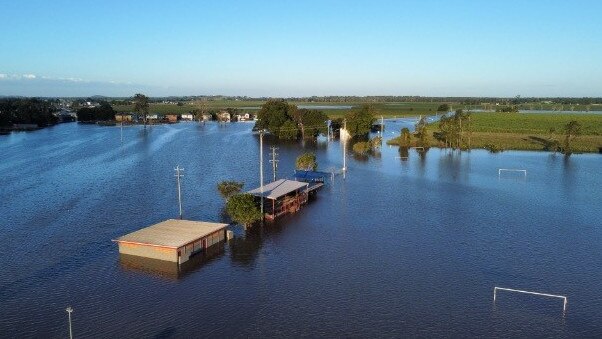
However despite all of the difficulties, it was with a dogged determination and large dollop of pragmatism that sporting bodies carried on with their seasons.
Competitions across the board, in more or less all major sports, were shortened, modified and recalibrated, with organisers being forced to adapt further when more rain fell throughout the middle of the year.
“Well into June we had hundreds and hundreds of games that had been washed out,” Steve Mackney, the general manager of Football Far North Coast, the region’s soccer body, said.
Despite these challenges, games were rescheduled and, most cases, replayed.
If it hasn’t already been reached, the finishing line is within touching distance for local sporting bodies.
And given some of the wonderful stories to have come out of season 2022, such as the Evans Head Bombers rugby league team overcoming widespread devastation in its community to make the club’s first ever first grade grand final, and the Cudgen Hornets winning a hat-trick of grand finals in the NRRRL last weekend to honour their hospitalised president Mick Channels, in many ways this season has been one of the most successful and important in recent memory, emphasising the central role that sporting clubs play in keeping regional communities together.
“I was very concerned that we might not have been able to proceed post-floods,” Mackney said.
“We’ve retrieved beyond what I would have expected possible. But let’s not kid ourselves, it’s been difficult.”
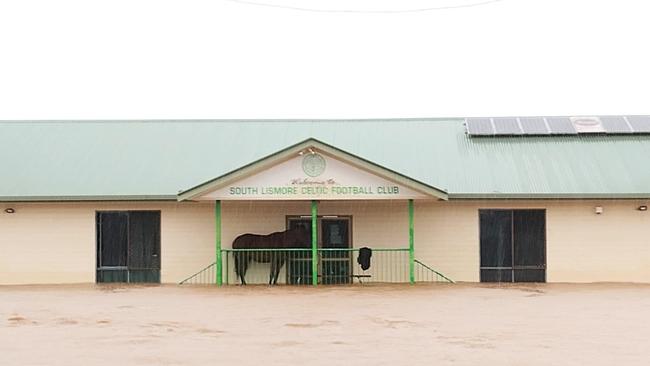
Perhaps even more remarkable than the season being successfully completed is the fact that most clubs across the region have survived.
In fact, not one club affiliated with the NRRRL or Football Far North Coast – the region’s two largest sporting bodies – has folded this year.
But while clubs have survived in one way or another, it doesn’t mean that 2022 hasn’t left scars.
“Each of the clubs were able to retrieve themselves so that at least teams were operating,” Mackney said.
“I won’t name them, but there are several clubs that are on life support, because the depth of hurt is phenomenal.
“I wasn’t confident that every club would be back up and running this year in any capacity. They are, but we’ve been stripped of about 1000 players, and I think 2023 could very well see a different space as well because clubs can’t sustain themselves forever; they’re run by volunteers and it’s a complex space.”
Player drain
While the challenges are many, one of the main issues facing sporting clubs this year has been a fundamental one: player numbers.
With towns inundated with water, businesses destroyed and homes rendered unliveable after the floods, many senior and junior participants were simply unable to play their sport of choice, whether due to time, cost or the need to focus on more pressing issues.
Despite having the largest amount of players of any code, soccer authorities in the Northern Rivers suffered significantly on the player participation front, with Far North Coast Football losing around 1000 of its pre-flood total of 7000 registered footballers.
Rugby union was another sport to feel the pinch, losing an estimated 800 players across the region.
These falls in participation rates naturally then fall back to the clubs. The Casino Bulls rugby union club are one to have suffered as a result, registering just six junior and one senior team this season.
“This is the first year since our inauguration (1972) that we haven’t been able to field two senior men’s teams,” says junior coordinator Will Campbell.
The club also didn’t have enough for an under 18s colts team, so they combined with Evans Head to form a side under the ‘Barbarians’ banner.
While the floods obviously haven’t helped, Campbell says the fall in participation is an ongoing issue for the Bulls, with the club particularly struggling to attract juniors after two Covid-cancelled years and now one flood-affected season.
“We’ve got about 140 registered juniors, compared to pre-Covid of around 250,” he said.
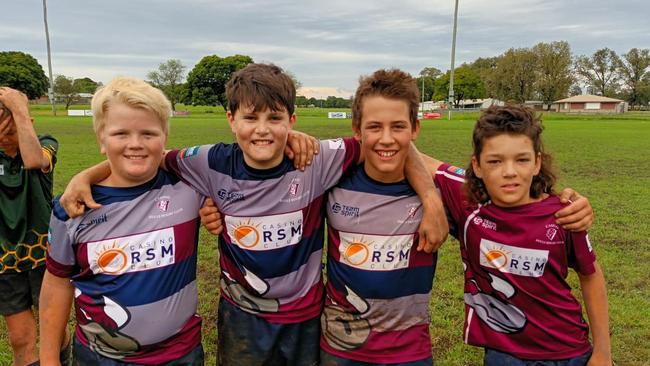
Remarkably, rugby league seems to have bucked the trend, something officials in the area put down to the significant financial and material support offered to clubs by the NSWRL and other bodies.
Participation rates in Group 1 – taking in areas such as Lismore, Casino and Grafton – were up by a handful, while Group 18 – which includes the Tweed and Byron Bay, but also flood-affected areas like Mullumbimby and Murwillumbah – saw a significant increase.
“We’re very lucky,” says NSWRL Northern Region zone manager Wayde Kelly. “The people who play are super passionate and enthusiastic, and we’ve tried to remove every barrier they could possibly have.”
But although rugby league participation rates across the Northern Rivers at large have remained remarkably resilient, clubs in some of the worst-affected areas, like Lismore’s Marist Brothers and Northern United, have not been spared.
Both failed to field an under 18s team this year, with Northern United only just managing a reserve grade side by scraping together the remaining under 18s players and some fringe first graders.
“We were affected big time,” Northern United president Djaan Jarrett said.
“There are some people in our club who weren’t able to commit because they were homeless and had other priorities that they had to focus on in their lives: the loss of their homes, the loss of their belongings, the loss of jobs.”
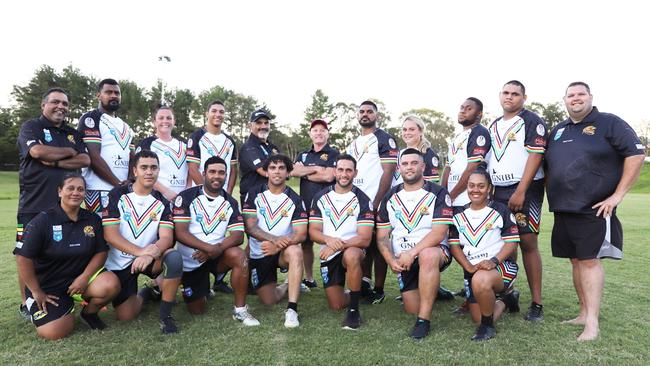
In addition to simply failing to field teams, Julie Perren, Marist Brothers’ secretary, said that the lack of players resulted in other challenges for her club.
“Under 18s are important because they’re obviously the future of your club, they bring a family to the games, because mums and dads and grandmas come and watch, so it’s more people in the gate.
“We did really miss that this year,” she said. “Financially, it was a very big hit for the club and I think it’ll be a long time coming back to what we once were.”
“Absolutely huge” financial hit
The reduced number of players was just one of the many ways in which clubs struggled financially throughout 2022.
“10 out of 24 of our clubs have literally been out of business this year in terms of not having a single canteen, have not had a single activity at their club with the opportunity to raise money,” says Mackney, the region’s soccer chief.
Indeed, the extent of the floods has wiped out some fields for the whole season, meaning a year on the road for players and their parents.
“We’ve still got multiple clubs that have not and will not return to their home venues, be it for training or for games, this year, and they’ve had to make alternative arrangements,” he added.
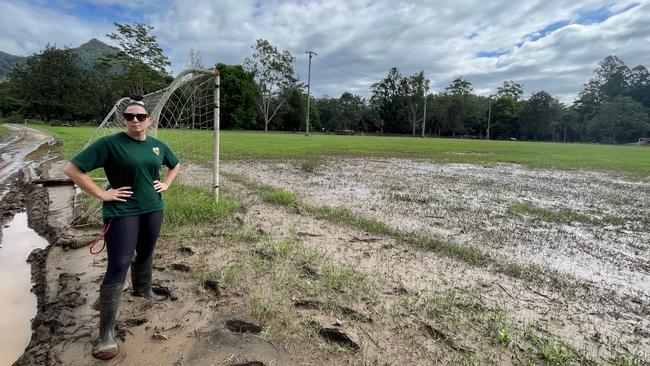
Even for some of those that have managed to play at home, the scale of damage has severely hindered their ability to even do something as simple as run a barbeque stand.
For example, for much of the season Marist Brothers’ senior players were forced to change under a marquee at Lismore’s Oakes Oval because there were no dressing sheds.
And even now, half a year after the floods, there is still no running water or electricity, with the club forced to bring in generators and bag after bag of ice to simply run a makeshift canteen.
“We obviously can’t produce the best home game facilities, but it was really important to us as a club and our players that we play at home in Lismore,” said Perren.
“It was important for us that our supporters could come to a home game on a Sunday, walk down to the oval and come and watch something that was normal, because for many months nothing was normal – there were no shops, there were no facilities, no restaurants, no pubs, no nothing.”
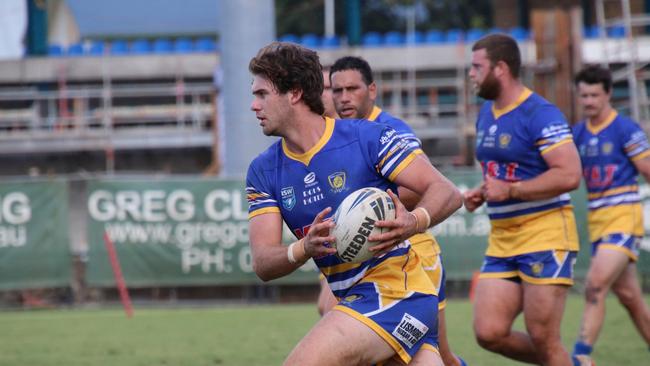
But while gate and canteen money is one thing, Mackney says the widespread effects on some entire communities has meant that other essential forms of financial support have simply not been available.
“As for sponsors – many, many businesses themselves are out of business. Clubs go down to the local butcher shop or the car yard or the pub and ask ‘Can we get a sponsorship?’ and they say: ‘With what? We’ve got no money.’ It’s a really ugly cycle.”
Perren agrees, saying that the financial impact for the Lismore-based Marist Brothers has been “absolutely huge”.
“Our sponsors are our pubs and clubs and businesses in town. We can’t ask them for money this year, some of them are not coming back.”
Groundswell of support
But while clubs struggled financially, one of the most heart-warming aspects of season 2022 has been the incredible support offered by sporting bodies, businesses, community organisations and individuals alike.
From Elastoplast donating mouthguards to junior rugby league players, to MST providing free strapping tape and even the Parramatta Eels NRL club sending a heap of adult rugby league boots for players to choose from, plenty of support has been forthcoming.
Lismore’s Northern United rugby league club received a scoreboard from AusSport Scoreboards, while local Indigenous-owned newspaper the Koori Mail helped with fundraising to make sure jerseys were received on time.
“We’re very, very fortunate, very, very blessed to have such a good support network around us,” says Jarrett, the club’s president.
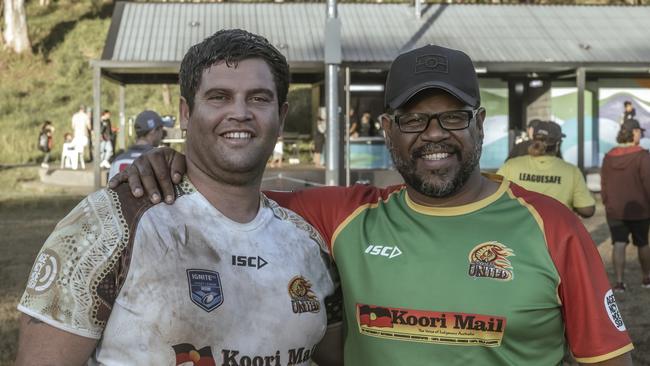
Meanwhile, on an organisational level, the NSWRL wiped player insurance costs and paid for on-field kits for clubs in the worst-affected areas, while also providing a series of grants for any lost gear and equipment.
“I think you would have had clubs that really would have struggled to get on the field without that reassurance that you’re not going to get a $10,000-15,000 bill through the season just for playing,” says NSWRL’s Wayde Kelly.
“If we put that barrier on entry, we knew we were going to struggle to retain everyone and make clubs feel confident that they could in all good conscience put a team on the park.”
It was a similar story with soccer, with Northern NSW Football providing concessions on playing fees and sending local authorities thousands of dollars of gear and resources. Three football bodies in the Hunter all sent $10,000 each to be put towards the worst-affected clubs.
And while Mackney says the support offered to Football Far North Coast has been “phenomenal”, he laments: “It’s a tough one. The needs are always way more than the capacity to support.”
Indeed, while the outpouring of assistance and goodwill towards the region has kept many grassroots sporting clubs afloat this year, Marist Brothers’ secretary Perren says the outlook in the near future looks bleak.
“Yes, New South Wales Rugby League has supported us this year, but we’re going to need help next year too, especially with having sponsorship money halved. You just can’t give us one handout – you’ve got to help us along the way,” he says.
“A lot of people in Lismore have been feeling fatigue and they’re tired.”
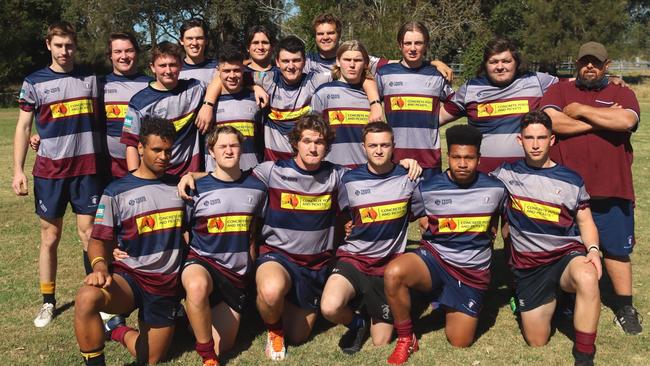
Although finances and players are undoubtedly crucial, an often overlooked aspect of community sporting clubs is the glue that keeps them together: the volunteers.
“Probably the biggest effect we had from the flood was volunteers, because lots of them are tradies and they’re flat-strap, or family farmers who are affected, so we got hit hard on the volunteer side of things,” says Will Campbell from the Casino Bulls.
In practice, Campbell says this has resulted in “fewer people doing more jobs, not to the higher standard that you would if you had more people helping out.
“You’d have a select few volunteers and they’d have to do everything from set up fields, being in the canteen, refereeing, being match officials and coach, so every person had more than one job this season.
“Things stop getting done around the club, and everyone suffers due to burnout, which is a problem,” he said.
“We’re on life support at the moment… It’s going to be an interesting year next year to see how we recover – if we don’t have another bloody weather event!”
Sadly, that is a prominent sentiment across the Northern Rivers. After disaster upon disaster, Djaan Jarrett from the Northern United rugby league club sums up much of the feeling of those involved in community sport, saying that despite their incredible resolve, the people of the Northern Rivers just aren’t quite sure how many more times they can keep bouncing back.
“We’ve had Covid-19, we’ve had fires, we’ve had floods – and that’s been back to back for five years, so I think it’s at that point now where our resilience, as strong as we want to be, is really on a fine line. We really do still need to be supported.”




